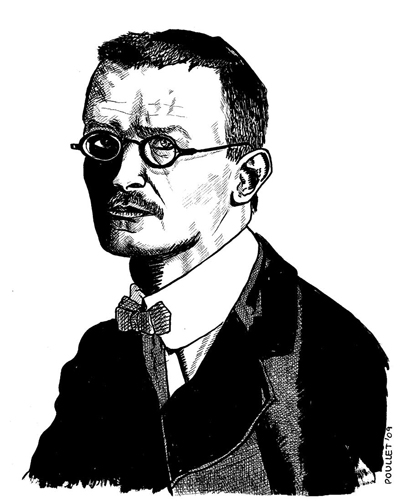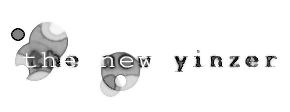Lost & Found: Hermann Hesse’s Knulp
Scott Silsbe
“The thinning-out phase follows / the period of reflection” ~ John Ashbery, “Summer”
It’s a slim, little book—falling to pieces at the spine—and it’s been sitting on one bookshelf or another of mine in various apartments or houses in various cities for about ten years now since the first time I read it. The first time through, I would have been around 21 years old, right in the thick of my interest—my obsession, perhaps—with Hermann Hesse. It was an interest that grew with each book that I read by or about Hesse, and one that would lead to a large Hesse library, and eventually, a multiple-country journey to houses the German writer called home.
At the time, I was encouraged by a friend, C., who shared my fascination. It was, in fact, C. who turned me on to Hesse, and she was to be my travel-companion for the Hesse tour of Europe. We two became die-hard scholars, ravenously reading and collecting any material on him we could find, discussing and debating the man’s work, talking about books of his that were yet-untranslated that we were going to learn German to translate. Maybe, we thought, one of us could write a book of our own on him.
The other day, I pulled Knulp down off the shelf again. A lesser-known book in Hesse’s oeuvre, it was published in 1915, when Hesse was about 38. This was just before the great success of his novel Demian. Looking at Knulp again now, I have a notion of why it’s not one of Hesse’s more popular books. For starters, it’s kind of a difficult book to label—its length suggests it’s a novella or short novel, and yet it’s comprised of three sections that could be considered interconnected short stories. Perhaps these are vignettes?

The first section, “Early Spring,” takes place in the early 1890s, and finds the protagonist wandering through Germany after a hospital stay. Knulp is a prototypical Hesse character—a wanderer, who has foregone the conventional life of his peers for a life on the road. He is a poet and a musician, and as suggested by the way he talks at times, a philosopher, too. When we readers catch up with Knulp, he has decided to pay a visit to his old friend Emil, a tanner. Emil represents all that Knulp has rejected—domesticity, regular employment, the companionship of married life. Setting up this kind of duality with two characters is another typical move by Hesse, one that he employed throughout his writing.
Reading through the first vignette, the book seemed familiar to me, but I couldn’t remember exactly why I had loved this book so much in my younger days. Sure, I could see how I—as an English-major minoring in German, Philosophy, and Creative Writing—could relate to the character of Knulp, but what made me love the book so passionately? Once I got to the second vignette, “My Recollections of Knulp,” it all came back to me.
Where “Early Spring” is told in a third-person omniscient point of view, “My Recollections…” is told in first-person, from the point of view of one of Knulp’s traveling buddies. A few pages into this vignette, the narrator and Knulp get into a philosophical discussion. While taking a break from their travels, resting in a graveyard, the two men begin theorizing about beauty, love, friendship, and the transience of life. Toying with these Romantic notions is something Hesse inherited from his great literary influences (Goethe, Novalis, et. al.), and, again, subjects he would tinker with his entire literary career. Re-reading this debate between Knulp and the narrator, I was reminded of the debates and discussions C. and I used to have about Hesse and life in general. But were we imitating characters in Hesse novels, or did we love Hesse’s books so much because they reflected our actions?
After Knulp and the narrator reach a standstill in their debate but before they fall asleep in the graveyard, Knulp recounts a dream he had, one he claims is a kind of fairy tale. This is another device I remember being very typical of Hesse’s work. Around the time Hesse wrote Knulp, he was beginning to get interested in Psychology—first with Freud, then later with Jung. And in keeping with Hesse’s Romantic roots, he wrote a good number of short stories that he considered fairy tales.
The fairy tale dream in Knulp is a good one, and, reading the book again, it was the moment that held up best for me. To summarize it, Knulp returns to what appears to be his hometown, but something feels out of place. He recognizes people on the street, but when he approaches them, they appear to be strangers. I think that one reason this dream sequence resonated so much with me upon this re-reading is that it reminded me of the surrealist novel, Invisible Cities, by Italo Calvino—one of my new favorite books.
By the time I got to the third vignette, “The End,” it was apparent to me why I’m not the Hesse fan I once was. “The End” has gone back to a third-person point of view, and we learn early on that our protagonist is older and that his health has deteriorated even more. Once he returns to his hometown, Knulp reflects on his past and is overwrought with nostalgic regret. Shortly thereafter, the book winds down with a dying Knulp conversing with God. It isn’t necessarily the Christian God, but it bares a pretty strong resemblance. Though maybe this ending was interesting or unique in Hesse’s day, I have to be honest and say that upon this reading of the book, the ending struck me as a bit trite or cliché. I think the book would have been much more interesting if it had ended six pages earlier, unresolved, with Knulp wandering into the woods.
That said, it was a pleasurable re-read. While Knulp probably isn’t Hesse’s strongest book, it has its moments. And it was nice to read it and think about the person I was when it had meant so much to me. Looking back, what I really appreciate is how reading Hesse’s writings taught me what it means to be a scholar—researching an artist’s work, tracking their oeuvre, evaluating their mutations, formulating theories about it all. My interest in Hesse has given way to other writers, musicians, and artists, and that might be a sign of growth, but probably it’s mostly a sign of the completist in me. One day I’ll have it all.
Scott Silsbe was born in Detroit. He now lives in Pittsburgh, where he plays music, writes stuff, collects records, and sells books. He also watches Penguins hockey and Steelers football.
